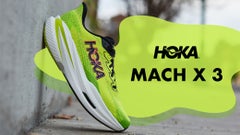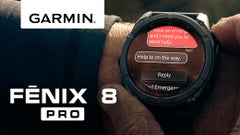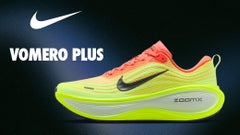
Garmin Watch Buying Guide- 2025
So, you’re in the market for a GPS watch. Fantastic. Your Strava will thank you later.
And you’re specifically looking for a Garmin. Good choice. They’re one of the biggest names in the game for a reason.
But now you’re clicking through the options, and...that’s a lot of numbers. And you’re trying to parse through each watch’s features, but now, let's be honest, there are SO MANY features that it’s getting hard to tell one from another.
Well, calm down. Let us take the wheel for a minute. We’ll get through this together.
Here at Running Warehouse we have more than 20 years of experience working with the running community. From shoes to apparel to gear, we supply it all, and we have a wealth of knowledge about the nuances that separate our different brands, makes, models, and everything in between. Now let's take this one step at a time, shall we?
Explanations of The Models
Garmin has been on the cutting edge of GPS watches since the beginning. They’re the trusted, knowledgeable veterans in the room, and you know that when you buy a Garmin, you’re buying one of the most respected brands on the market.
But within Garmin’s catalogue you’ve got some choices to make. As Garmin has grown, they’ve started specializing, with different models of watches catering to different subsets of the running community. At Running Warehouse, we think their fenix, Forerunner, and Enduro offerings each do a good job of both identifying their target audience and then spoiling them.
The GARMIN FORERUNNER line includes Garmin’s mass-appeal watches. These are the best choices for the majority of runners, sporting the best of Garmin’s features, user interfaces, and accessibility. Their intensity lies across a spectrum though, ranging from the Forerunner 55s all the way up to the 970s. We’ll dig into those differences in just a bit.
The GARMIN ENDURO line emphasizes technological efficiency and incredible battery lives. It has all the premium features of a top-end Forerunner, but the Enduros make a point of supporting those features for days on end, or even weeks, if you’re ready to get crazy with things. If you’re an ultra runner that needs prolonged GPS usage, or if you’re expecting long weekends away from a charger, grinding out trail after trail, then an Enduro might be right for you.
Finally, the GARMIN FENIX series is the cadillac of the Garmin lineup. Luxurious, and overflowing with features, this is the model you look to when you want to really treat yourself.
So, those are the broad strokes. But now let's dig a little deeper.
The Forerunners
Forerunner 55
The 55 is the easy-to-use, straightforward training tool for the straightforward runner. It has a full-color display, like the rest of our GPS watches do, and it has a battery life of 20 hours in GPS mode/2 weeks in smartwatch mode. That’s plenty of juice for most people’s weekly training routines with a nighttime charge mixed in every now and then. The 55 has downloadable, adaptive training plans via Garmin Coach, and Pacepro technology (GPS-based pace guidance) which can track, record, and give you the feedback you need to run your best runs. It’s interface is as simple as things come, and for people just dipping into the GPS Watch world for the first time, it does a great job of easing us into things.
Forerunner 165
Shifting into second gear, the 165 takes everything that was included in the Forerunner 55 and adds a little more pizzazz to the equation, while still keeping the price point below $300. This model adds touchscreen interaction and is also able to connect with your smartphone, with seamless notifications pushed straight across to your wrist and Garmin Pay capabilities so you can leave your wallet at home. And even with this influx of new abilities, the battery life is about the same as the Forerunner 55’s battery life (11 days in smartwatch mode, 19 hours in GPS mode).
Forerunner 265
Another “gear shift” in the same “car!” The Forerunner 265 provides everything the 55 and 165 provided, but now you get a larger screen size, a longer battery life, and some advanced training metrics. The watch face's size expands from 43 mm 46.1 mm, giving you easier control over the watch’s touchscreen features. Its battery life flexes from 19 hours GPS / 11 days smartwatch to a slightly more robust 20 hours / 13 days. But one of the biggest selling points to the upgrade is the increased accuracy in the GPS system, with the 265 introducing a dual-band GPS antenna, increasing the watch’s reliability in remote, or cluttered areas.
Forerunner 265s
Numbers AND letters? Is this algebra? I hated algebra...
Jokes aside, the ‘s’ here stands for ‘small.’ The 265s has the same features, technical know-how, and (importantly) the same dual-band GPS antennae as the 265, but if that larger screen seems like it would be TOO much larger for you, then the 265s will take care of you. The Forerunner 265s cuts 5 mm from the watch face to leave us with a slimmer 41.7 mm diameter while still offering all the bells and whistles of the model.
Forerunner 570
Two gears to go (for now!). With the 570 we start seeing some of Garmin’s seriously impressive, advanced hardware getting introduced. New to this model is a skin temperature sensor which can guide you to cool down or heat up so that you stay in peak condition. There’s an all new evening-report feature, to keep you informed of all your health and training statuses, and there’s new built-in activity profiles to include running, triathlon, cycling, open-water swimming, and many more. The 570 is what we’d recommend if you’re a multi-sport athlete trying to track workout data across multiple different activities simultaneously, as it has the processing power to segment out those different workout categories. The battery life takes a hit, because the watch is doing so much work, decreasing to 11 days in smartwatch mode, 18 hours GPS mode (comparable to the Forerunner 165), but it’s an understandable tradeoff for the computational feats being performed.
Forerunner 965
But I don’t want a trade-off, you say. I want something that can run at a sprinter’s speed for marathon distances. Give me everything!
Well then, haaaaaave you met the Forerunner 965? With 31 hours of GPS mode battery and a whopping 23 days of battery life in smartwatch mode, the Forerunner 965 doesn’t know how to quit. It also introduces full-color, built-in maps and wrist-based running dynamics, tracking cadence, stride length, ground contact time, and more. You’ll get to see everything you want to see about where you’re going, when you’re going, and how you’re going.
Forerunner 970
For such a minor numerical change, there’s quite a few upgrades worth mentioning here. The Forerunner 970 is the absolute peak of the Forerunner lineup. It offers the same sized display as the 965, but creates that display with a harder, sapphire glass screen and enhanced brightness. The 970 includes an upgraded heart rate sensor and skin temperature/respiratory variation monitoring, all of which lets you get a more detailed look at your health systems. And the same goes for its data tracking features for your runs, with the 970 including the ability to track detail work such as triathlon transitions so that those exchanges don’t muddy up your in-workout data. It’s the little things, but at this level of watch, sometimes those little things can make all the difference.
Enduro
Garmin Enduro 3
While the Forerunner boasts variation after variation, the Enduro keeps things more straightforward. If you want a watch that hosts Garmin’s best features, but attacks as efficiently as possible, to ensure the best battery life possible, then the Enduro 3 is ready to provide.
It’s the 100 mile ultra marathoner of Garmin Watches.
With up to a 320 hour battery life (not a typo) provided while in solar charging mode, the Enduro 3 can keep ticking up to 10 times longer than the Forerunner 965.
Fenix
Garmin Fenix 8
Last up, but certainly not least up, we’ve made it to the Garmin Fenix 8. This is THE premium Garmin experience, stuffed to the breaking point with all of the gizmos and gadgets you could ever need on the trail, on the course, or in your daily life. It includes all the features we broke down across the Forerunner series, and then some. Things that are unique to the Fenix, above and beyond even the Forerunner 970 or the Enduro:
- The Fenix 8 has a built-in speaker and microphone built in, and protected behind a metal plate, for making and receiving phone calls through the watch.
- The Fenix 8 has a 40 meter dive rating and leakproof metal buttons so you can add scuba and apnea dive activities to your routine
- It comes with OPTIONS. Choose from three different screen sizes and three different screen compositions, including a solar option, to personalize the experience to your needs.
It’s the highest end watch we carry, and if the Fenix 8 can’t do it, then we’re not sure any watch can.
The Big Picture
We tried to take that step by step, but still. That was a lot. We hope you found this level by level guide to be helpful, but if you need things broken down a bit further? Check out the table below where we’ve highlighted a few of the key features in a hopefully-easy-to-read chart.
| Battery-GPS Mode | Battery-Smartwatch Mode | Touch Screen? | Dynamic Maps? | Garmin Coach? | |
| Forerunner 55 | 20 hrs | 14 days | |||
| Forerunner 165 | 19 hrs | 11 days | Y | ||
| Forerunner 265 | 20 hrs | 13 days | Y | ||
| Forerunner 570 | 18 hrs | 11 days | Y | ||
| Forerunner 965 | 31 hrs | 23 days | Y | Y | |
| Forerunner 970 | 31 hrs | 23 days | Y | Y | |
| Enduro 3 | 320 hrs | Y | Y | Y | Y |
| Fenix 8 | Varies based on model | Varies based on model | Y | Y | Y |




























